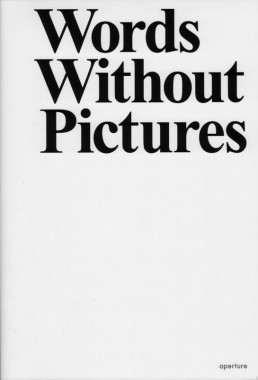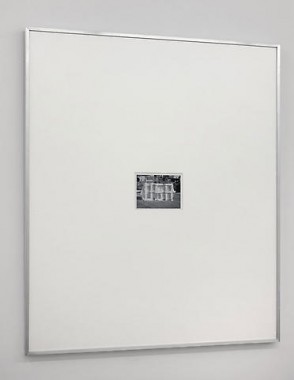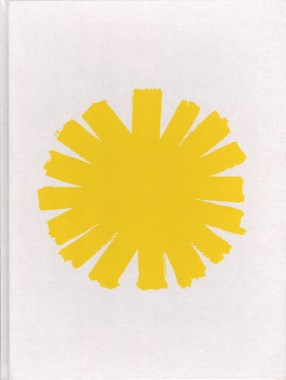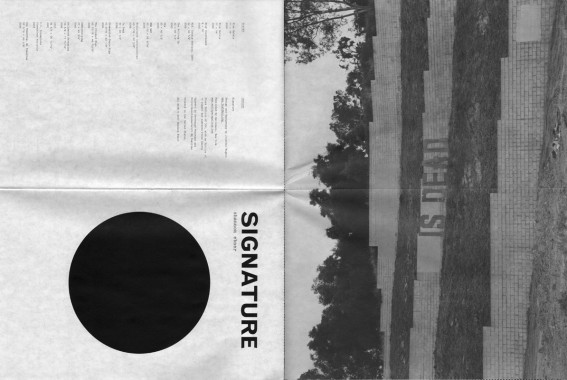
Alex Klein, Words Without Pictures
Softcover, 510 pp., offset 1/1, 5.75 x 8.25 inches
Edition of 2000
ISBN 978-1-5971114-2-3
Published by Aperture/LACMA
$25.00 ·
Words Without Pictures was originally conceived by curator Charlotte Cotton and artist Alex Klein as a means of creating spaces for discourse around current issues in photography. Every month for a year, beginning in November 2007, an artist, educator, critic or curator was invited to contribute a short unillustrated essay about an aspect of emerging photography. Each piece was available on the Words Without Pictures
website for one month and was accompanied by a discussion forum focused on its specific topic. Over the course of its month-long “life,” each essay received both invited and unsolicited responses from a wide range of interested parties. All of these essays, responses and other provocations are gathered together here. Previously issued as a print-on-demand title, we are pleased to present
Words Without Pictures to the trade for the first time as part of the
Aperture Ideas series.
A. L. Steiner, Alex Klein, Alex Slade, Allan McCollum, Allen Ruppersberg, Amir Zaki, Amy Adler, Anthony Pearson, Aperture, Art, Arthur Ou, Carter Mull, Charlie White, Charlotte Cotton, Christopher Bedford, Criticism, DAP, Darius Himes, David Reinfurt, Dexter Sinister, George Baker, Harrell Fletcher, James Welling, Jason Evans, John Divola, Kevin Moore, LACMA, Leslie Hewitt, Marisa Olson, Mark Wyse, Michael Queenland, Miranda Lichtenstein, Paul Graham, Penelope Umbrico, Photography, Sarah Charlesworth, Shannon Ebner, Sharon Lockhart, Soo Kim, Sze Tsung Leong, Theory, Walead Beshty, Wallis Annenberg Photography Department

Shrouded Monument, 2008, C-print, 48.5 x 40.5 inches
Shannon Ebner
Signal Hill
7 January — 13 February 2010
Altman Siegel Gallery, San Francisco
Images point to what is in the world; that is the problem with representation. I think that is why there has been so much activity around abstraction — it offers one possible way around the problem of pictures. I am looking for a way out of the problems of representation but I am not satisfied to leave the world of representation all together. I am somehow looking to stay in the world of depictive images by simply asking for more from them through developing a different system, idea or model of how they might function.
—Shannon Ebner
Altman Siegel Gallery, Shannon Ebner

Not Equal, 2009, Plywood, wood glue and enamel paint, 13.1 x 17.75 inches
Shannon Ebner
Invisible Language Workshop
30 October — 19 December 2009
Opening Reception: Friday 30 October, 6-8pm
Wallspace
Images point to what is in the world; that is the problem with representation. I think that is why there has been so much activity around abstraction — it offers one possible way around the problem of pictures. I am looking for a way out of the problems of representation but I am not satisfied to leave the world of representation all together. I am somehow looking to stay in the world of depictive images by simply asking for more from them through developing a different system, idea or model of how they might function.
—Shannon Ebner
Art, Photography, Shannon Ebner, Typography, Wallspace

Shannon Ebner, The Sun As Error
Hardcover, 64 pp., offset 4/1, 11 x 14.5 inches
Edition of 1000
ISBN 978-0-87587-200-1
Published by LACMA
$65.00 · out of stock
The Los Angeles based artist Shannon Ebner extends her exploration of photography, sculpture and language in this remarkable book,
The Sun as Error. In collaboration with Dexter Sinister (design duo David Reinfurt and Stuart Bailey),
The Sun as Error re-investigates the meaning and language of photographs, creating both an open-ended reading of her practice and also rethinking the idea of an artist’s monograph. Far from straightforward, the book interweaves her bodies of work, previously unseen one-off pieces, with the language of technical diagrams, optical illusions, and graphic design. One of the persistent motifs through the book’s sequence is an asterisk and, specifically, one imbued with the legacy of the graphic designer Muriel Cooper. As the first design director for MIT Press and the cofounder of the Visible Language Workshop, Cooper’s legacy for reorienting and repositioning the direction of an artist’s monograph is imaginatively explored in the creative partnership of Dexter Sinister and Shannon Ebner.
Shannon Ebner’s work has been shown in exhibitions including Trace at The Whitney Museum of American Art at Altria (2006), The 2006 California Biennial at The Orange County Museum of Art, Uncertain States of America, at The Serpentine Gallery, London (2006), Learn to Read, at the Tate Modern, London (2007), and the 2008 Whitney Biennial at The Whitney Museum of American Art.
Art, Charlotte Cotton, Dexter Sinister, Graphics, LACMA, Photography, RAM, Shannon Ebner, Stuart Bailey, Theory, Typography, Wallis Annenberg Photography Department

Shannon Ebner, Signature, offset poster, 24 × 36 inches (above: 12 x 18 inches folded)
Shannon Ebner, Signature (Poster)
Poster, perforated, offset 4/1, 6 x 9 inches [24 × 36 inches unfolded]
Edition of 280
Published by Wallspace
$10.00 · out of stock
Shannon Ebner’s work centers on a do-it-yourself alphabet of handmade letters and signs temporarily placed—and strategically displaced—in public contexts. The artist sets language in the service of photography, her cryptic messages captured and fixed in black-and-white photographs. Populating actual yet uncertain landscapes or mise-en-scènes including California real estate sites, the La Brea Tar Pits, and the Washington Monument, these ephemeral signs spell out such darkly ambiguous phrases as “Landscape Incarceration,”
“The Doom,” and “The Day—Sob—Dies.”
—Todd Alden
Art, Distribution, Jonathan Maghen, Photography, Shannon Ebner, Todd Alden, Typography, Wallspace
Shannon Ebner, Signature
Softcover, 32 pp., offset 4/1, 6 x 9 inches
Edition of 200
Published by Wallspace
$10.00 · out of stock
Shannon Ebner’s work centers on a do-it-yourself alphabet of handmade letters and signs temporarily placed—and strategically displaced—in public contexts. The artist sets language in the service of photography, her cryptic messages captured and fixed in black-and-white photographs. Populating actual yet uncertain landscapes or mise-en-scènes including California real estate sites, the La Brea Tar Pits, and the Washington Monument, these ephemeral signs spell out such darkly ambiguous phrases as “Landscape Incarceration,” “The Doom,” and “The Day—Sob—Dies.”
—Todd Alden
Art Basel, Distribution, Jonathan Maghen, Shannon Ebner, Wallspace




